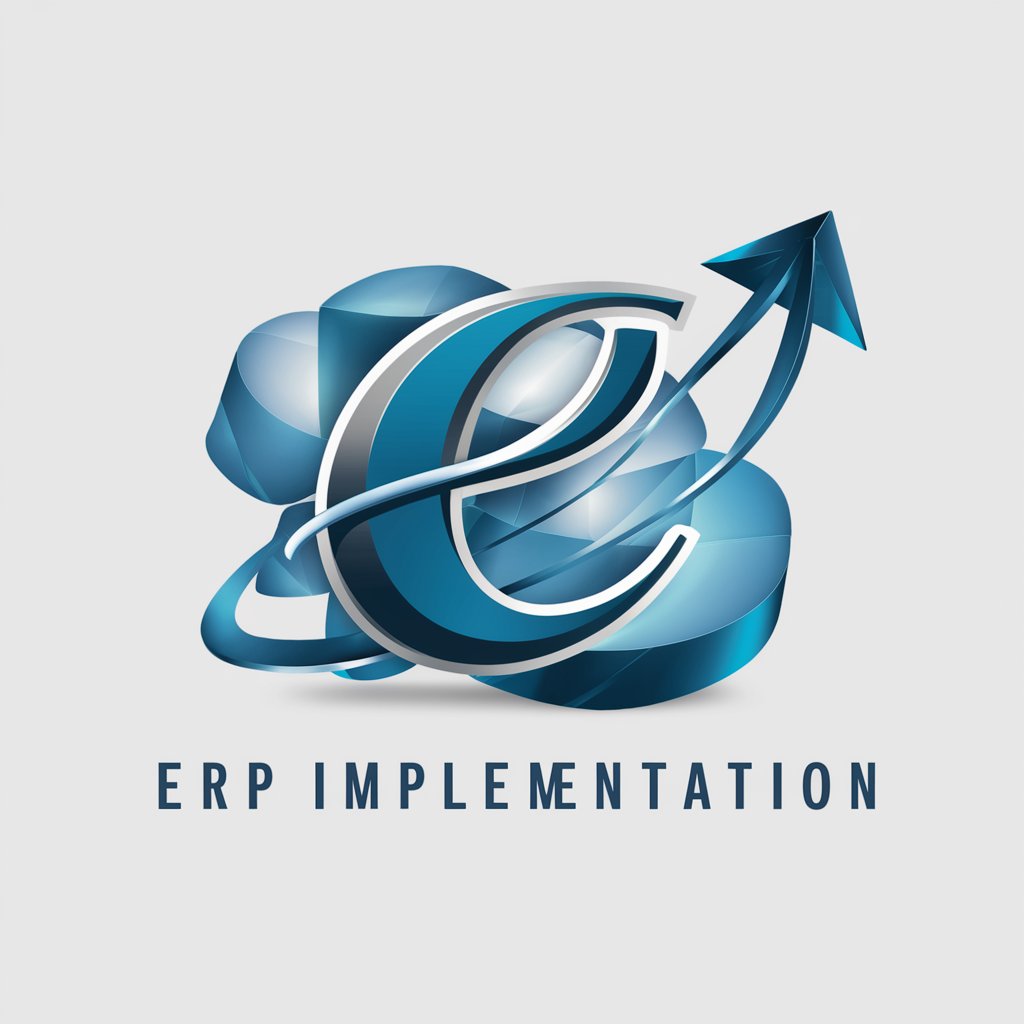ERP Implementation - ERP Implementation Insight

Welcome! Let's optimize your ERP implementation journey.
Streamline Operations with AI-Powered ERP
Can you explain the key steps in the ERP implementation process?
What are the best practices for selecting ERP software?
How should we approach data migration during ERP implementation?
What strategies can be used to ensure user adoption and training?
Get Embed Code
Overview of ERP Implementation
ERP (Enterprise Resource Planning) Implementation involves the process of selecting, tailoring, and deploying an ERP system within an organization. The primary purpose of ERP systems is to integrate various business processes and functions—such as finance, human resources, supply chain management, and manufacturing—into a unified, coherent system. This integration facilitates the flow of information across departments, enabling better decision-making, improved efficiency, and enhanced productivity. For instance, in a manufacturing context, an ERP system could streamline operations by linking production planning with inventory control, procurement, and financial management, ensuring real-time visibility and coordination across these critical areas. Powered by ChatGPT-4o。

Core Functions of ERP Implementation
Integration of Business Processes
Example
A manufacturing company uses ERP to synchronize its supply chain, production, and distribution processes. This integration eliminates data silos, improving operational efficiency and responsiveness to market demands.
Scenario
By implementing an ERP system, the company can automatically update inventory levels as products are manufactured and shipped, ensuring accurate stock data across all departments.
Financial Management
Example
A multinational corporation leverages ERP for consolidating financial data across its global operations, ensuring compliance with various international accounting standards and regulations.
Scenario
The ERP system aggregates financial data from different regions, automatically adjusting for currency fluctuations and local tax laws, providing a consolidated view of the company's financial health.
Human Resources Management
Example
A large retail chain uses ERP to manage its workforce, from recruitment and onboarding to payroll and performance evaluations.
Scenario
The ERP system streamlines HR processes, allowing for automated tracking of employee hours, calculation of benefits, and management of personnel records, thereby enhancing operational efficiency and employee satisfaction.
Customer Relationship Management
Example
A service-based enterprise utilizes ERP to enhance customer service by integrating customer information with service delivery processes.
Scenario
The ERP system provides a 360-degree view of customer interactions, enabling personalized service and timely resolution of issues, leading to improved customer loyalty and retention.
Target User Groups for ERP Implementation
Manufacturing Companies
These businesses benefit from ERP systems by gaining real-time insights into their production processes, inventory levels, and supply chain operations, leading to optimized production schedules, reduced inventory costs, and improved order fulfillment rates.
Service Organizations
Service firms, including healthcare, education, and financial services, utilize ERP to streamline their operations, manage client information, and improve service delivery, resulting in enhanced efficiency and customer satisfaction.
Multinational Corporations
Global enterprises leverage ERP to manage their complex and diverse operations across different countries, ensuring consistent business practices, compliance with local regulations, and real-time visibility into worldwide operations.
Small and Medium-Sized Enterprises (SMEs)
SMEs benefit from ERP by gaining access to the same level of process integration and efficiency that larger corporations have, enabling them to compete more effectively in their markets while managing growth and scalability.

Guidelines for Using ERP Implementation Tool
1
Begin by accessing a free trial without the need for signing up or subscribing to premium services, available at yeschat.ai.
2
Identify your business requirements and objectives to select the ERP software that best aligns with your organization's needs.
3
Engage stakeholders across departments to ensure the ERP system addresses all functional areas and integrates seamlessly with existing processes.
4
Plan for data migration, system customization, and user training to facilitate a smooth transition and adoption of the new ERP system.
5
Implement a phased rollout of the ERP system, starting with a pilot program to test functionality and gather feedback for optimization.
Try other advanced and practical GPTs
与猫对话
Chat with your cat through AI

Body Wash
Tailored body wash advice, powered by AI

Beh iDesign Content Creator
Elevate Your Design Content with AI

LAVA CSD 海外邮件编写
Revolutionizing Customer Support with AI

Debug
Elevate your code with AI-powered reviews.

SenpAI
Empowering Physiotherapists with AI

Festive Elf Idea Spark
Sparking Joy with AI-Powered Elf Mischief

Personal Brand Coach
Empowering Your Unique Brand with AI

The Forex Trade Room
Empowering Traders with AI-Driven Insights

도전 번역 도움이 v0.11
AI-powered, culturally nuanced translations

LINEスタンプ作成ツール・loveiy
Express Emotions Vividly with AI

Partnerships
Empowering Collaborations with AI

In-Depth Q&A on ERP Implementation
What is ERP Implementation?
ERP Implementation involves integrating a comprehensive software platform that manages all aspects of a business's operations, including finance, human resources, supply chain, and customer relations, to enhance efficiency and decision-making.
How long does an ERP Implementation take?
The duration of an ERP Implementation varies based on the complexity of the business processes, the size of the organization, and the extent of customization required, but typically ranges from 6 months to 2 years.
What are common challenges in ERP Implementation?
Common challenges include resistance to change from users, data migration issues, underestimating the importance of user training, and aligning the ERP system with specific business processes.
How can I ensure a successful ERP Implementation?
Success can be ensured by thorough planning, engaging stakeholders, choosing the right implementation partner, investing in training, and setting realistic expectations for the timeline and budget.
Can ERP systems be customized for specific industries?
Yes, ERP systems can be highly customized to meet the unique requirements of various industries, including manufacturing, healthcare, retail, and education, ensuring relevancy and effectiveness.
